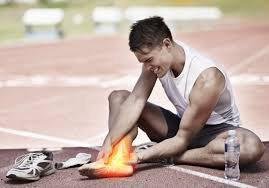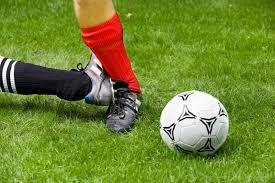Sport Injuries
The Problem
Many people play sports in some way or another, whether they are playing for fun in their backyard or competitively on a team. Exercising by playing sports can be very beneficial to your health, but sometimes these benefits to your health are outweighed by negative things, such as an injury.
The severity of these injuries can range from minor to very serious, with some injuries requiring surgery to fully heal.
Deciding when to return to sport after injury is complex and multifactorial—an exercise in risk management. Return to sport decisions are made every day by clinicians.
 Dr.foot Clinic has a strong focus on sports injury:
Dr.foot Clinic has a strong focus on sports injury:
●Sprains ●Strains
●Tendinitis ●Fasciitis
●Bursitis ●Dislocations
●Fractures ●Contusions
●Muscle cramps and spasms
●Lacerations and abrasions
Treatment
Dr. Foot offers treatments for common sports injuries:
- Conservative Treatment
- The goals of treatment are to reduce further damage to the affected area, relieve muscle pain and spasms, reduce inflammation, and encourage the healing process.
- The most common treatment that is usually applied initially following a sports injury is the RICE approach. This approach involves rest, ice, compression, and elevation of the affected area. The goal of the RICE approach is to minimize inflammation of the injured area. Ice should be applied to the affected area in increments of 15 to 20 minutes, followed by a rest period of 30 to 60 minutes. Longer periods of ice application can lead to increased circulation and increased bleeding in the affected area. Compression of the affected area may help to reduce swelling. Elevation of the area, above the level of the heart, may help to decrease swelling.
- Occasionally, a patient may be immobilized when they sustain a sports injury. This involves immobilizing the affected area to reduce movement and prevent further injury. Immobilization helps to enable blood supply to the affected area, reduce pain, swelling, and spasm. Common devices that are used for immobilization include slings, splints, casts, and leg immobilizers.
- Physicians may make additional recommendations to patients who have suffered a sports injury. Non-steroidal anti-inflammatory drugs (NSAIDs) may be recommended to help reduce inflammation at the affected site, thereby helping to reduce pain. However, long-term use of NSAIDs can cause irritation of the stomach and can also affect kidney function. Patients taking NSAIDs should therefore be monitored closely for adverse side effects. Another commonly used medication for sports injuries is acetaminophen. Acetaminophen may help to relieve pain, however, it has no anti-inflammatory properties and does not help to reduce inflammation that is commonly associated with sports injuries.
- Custom orthotics – Depending on the nature of the sports injury, we may prescribe a pair of custom orthotic devices to provide comfort, restrict abnormal motion, or redistribute forces across your foot. These can be instrumental in addressing current issues, but also help to prevent additional ones from developing.
 In rare cases, surgery may be necessary for severe injuries including compete tears and compound fractures.
In rare cases, surgery may be necessary for severe injuries including compete tears and compound fractures.
- General physiotherapy for sport injuries:
Physical therapy, including a thorough rehabilitation program, is an essential part of the healing process, as it will help the injured area to return to a normal level of functioning. A physical therapy program consists of mobilization of the affected area (when appropriate) as well as an exercise program that consists of a variety of targeted stretching and strengthening exercises to help improve range of motion and strength of the affected area.
Other conservative treatment methods that may be utilized for sports injuries include:
- Extracorporeal Shockwave Therapy –This is a state of the art treatment option we have here at Dr. Foot clinic that is also used to treat professional athletes.
- MLS Laser Therapy – You can receive benefits like faster healing, increased mobility, and marked decrease in pain right here at Dr. Foot clinic from the most advanced laser therapy system available. MLS laser therapy is quick, painless, and highly effective!
- Platelet Rich Plasma (PRP) Injections – This advanced treatment capitalizes on the body’s natural growth factors to help damaged tissues heal more quickly. Professional and world-class athletes use PRP injections as a way to recover from injury and return to their sports in less time than it would otherwise take.
- Amniogenic Therapy – In this form of therapy, we inject a mixture of amniotic fluid and tissue into damaged soft tissues to promote growth and rejuvenation with proteins, carbohydrates, and naturally-occurring fluids. This is an ideal alternative to surgery for many different sports injuries.


